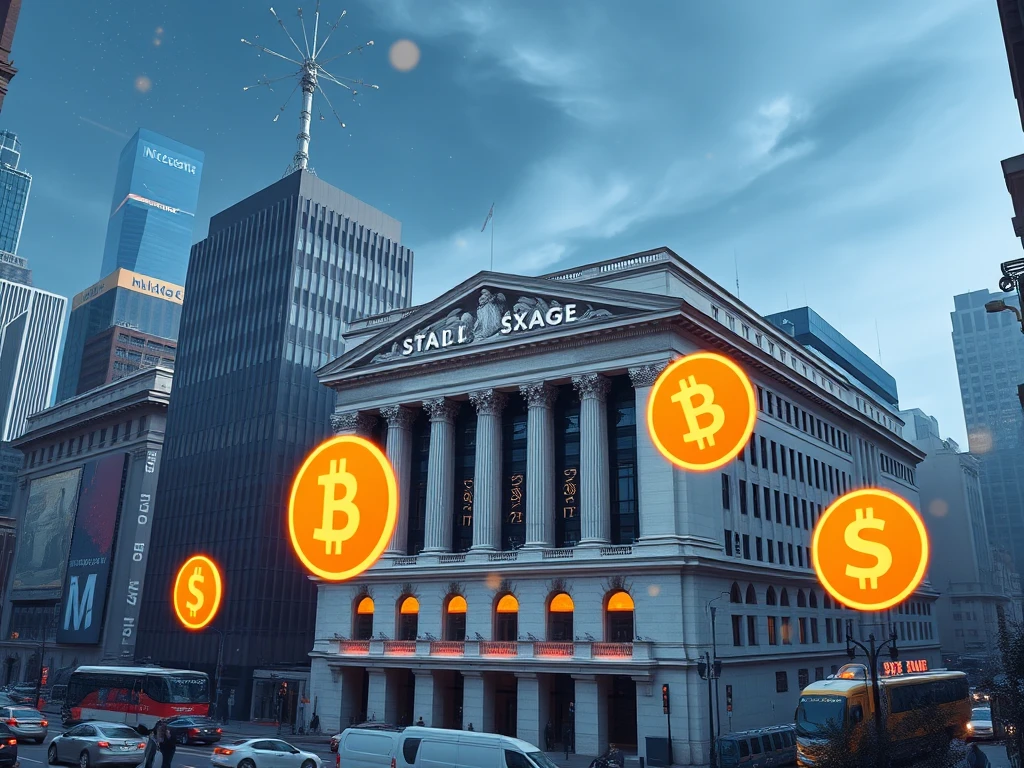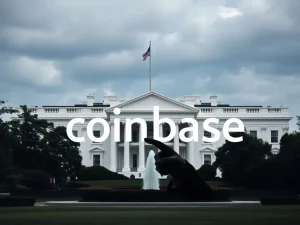Revolutionary Stablecoin Integration: Circle and ICE Pioneer NYSE’s Crypto Future

Exciting developments are unfolding in the cryptocurrency and traditional finance worlds! Imagine a future where your crypto stablecoins seamlessly interact with giants like the New York Stock Exchange. That future might be closer than you think. Leading stablecoin issuer Circle and Intercontinental Exchange (ICE), the powerhouse behind the NYSE, are joining forces to explore the fascinating realm of stablecoin integration. Let’s dive into what this collaboration means for the future of finance and the role of stablecoins like USDC.
Why is Stablecoin Integration a Game Changer?
Stablecoins have rapidly become indispensable tools in the crypto ecosystem, and their appeal is extending far beyond. Why? It boils down to a few key advantages:
- Low Costs: Stablecoin transactions typically incur significantly lower fees compared to traditional banking systems, especially for international transfers.
- Transferability: Moving stablecoins across borders is remarkably easy and efficient, bypassing the complexities of traditional wire transfers.
- Near-Instant Settlement: Transactions are processed and settled in mere seconds or minutes, a stark contrast to the days-long settlement times in conventional finance.
These benefits are driving increased adoption and opening up diverse use cases for stablecoins, making them a compelling alternative in various financial scenarios.
Circle and Intercontinental Exchange: A Powerful Alliance for Stablecoin Adoption
The recent announcement of a Memorandum of Understanding (MoU) between Circle and Intercontinental Exchange (ICE) signals a significant step towards bridging the gap between digital assets and traditional markets. ICE, a global leader operating exchanges and clearing houses, including the prestigious NYSE, is exploring the potential of integrating Circle’s US Dollar Coin (USDC) and US Yield Coin (USYC) into its extensive operations. This includes derivatives exchanges, clearinghouses, data services, and other critical systems.
Lynn Martin, President of the New York Stock Exchange, highlighted the vision behind this collaboration: “We believe Circle’s stablecoins and tokenized digital currencies can play a larger role in capital markets as digital currencies become more trusted by market participants as an acceptable equivalent to the US Dollar. We are excited to explore the potential use cases for USDC and USYC across ICE’s markets.”
This statement underscores a growing confidence in stablecoins as legitimate and reliable financial instruments within established market frameworks.
How Will Stablecoin Integration Reshape the NYSE and Beyond?
The potential stablecoin integration into ICE’s systems could revolutionize several aspects of traditional finance:
- Faster and More Efficient Settlements: Imagine trades on the NYSE settling almost instantly using USDC. This would dramatically increase efficiency and reduce counterparty risks.
- Expanded Access to Digital Assets: Integrating stablecoins could pave the way for easier access to a broader range of digital asset products for institutional investors through regulated exchanges like the NYSE.
- Innovation in Financial Products: The collaboration could lead to the development of new financial products that leverage the speed and efficiency of stablecoins within traditional market structures.
This move aligns with a broader trend in traditional finance towards embracing digital assets. Nasdaq’s announcement of 24/7 weekday trading starting in 2026 and the NYSE’s plans to extend trading hours demonstrate a shift towards a more globally oriented and always-on financial market. Stablecoins could be the key to facilitating this transition smoothly.
Stablecoins: More Than Just Trading Tools?
While initially popular for crypto trading, stablecoins are proving to be versatile instruments with applications extending beyond speculation. Data from Bitso’s “Crypto Landscape in Latin America 2024” report reveals a fascinating trend: stablecoins, including USDC, are becoming vital as a store of value in regions facing economic instability.
In Latin America, stablecoins accounted for 39% of crypto purchases, with USDC comprising a significant 24% of the total stablecoin volume. Why are people turning to stablecoins in these regions?
- Hedge Against Inflation: In countries experiencing rapid currency depreciation, stablecoins offer a refuge, maintaining their value pegged to more stable currencies like the US dollar.
- Accessibility and Ease of Use: Stablecoins provide a more accessible and user-friendly alternative to traditional banking in regions with limited financial infrastructure.
- Remittances and Cross-Border Transactions: The low fees and speed of stablecoin transfers make them ideal for remittances and international business, bypassing costly and slow traditional methods.
A 2023 Chainalysis report further reinforces this trend, highlighting that stablecoins constitute the majority of crypto value received in Latin America, preferred over Bitcoin as a store of value. USDC emerged as the most widely held and transferred crypto in the region, showcasing its real-world utility.
The Astonishing Rise of Stablecoin Transfer Volumes
The practical benefits of stablecoins are not just theoretical. A January 2025 report from CEX.IO revealed an astounding statistic: stablecoin transfer volumes in 2024 surpassed the combined volume of Visa and Mastercard by a significant 7.7%! Stablecoins recorded a staggering $27.6 trillion in transfer volume, demonstrating their explosive growth and increasing dominance in the payment landscape.
This data underscores the transformative potential of stablecoins, not just within the crypto sphere, but as a challenger to established payment giants in the broader financial ecosystem.
What’s Next for Stablecoin Integration and the NYSE?
The collaboration between Circle and ICE is still in the exploratory phase, but the implications are enormous. As stablecoin integration progresses, we can anticipate:
- Increased Institutional Adoption: The involvement of ICE and the NYSE could encourage greater institutional adoption of stablecoins, legitimizing them further within traditional finance.
- Regulatory Clarity: Such partnerships may also prompt regulators to provide clearer frameworks for stablecoin usage within established financial markets.
- Further Innovation: This collaboration could spark further innovation in both stablecoin technology and its application within traditional financial systems.
The journey of stablecoin integration into the NYSE and other ICE platforms is just beginning, but it promises to be a transformative one. Keep an eye on this space as it unfolds – it could redefine how we interact with finance in the years to come!
Conclusion: A Stable Future for Finance?
The exploration of stablecoin integration by Circle and Intercontinental Exchange marks a pivotal moment in the evolution of finance. By bridging the gap between the innovative world of cryptocurrencies and the established infrastructure of traditional markets like the NYSE, this collaboration has the potential to unlock unprecedented efficiency, accessibility, and innovation. As stablecoins continue to demonstrate their real-world utility and gain traction across diverse applications, their integration into mainstream financial systems seems less like a possibility and more like an inevitable step towards a more inclusive and efficient financial future.








